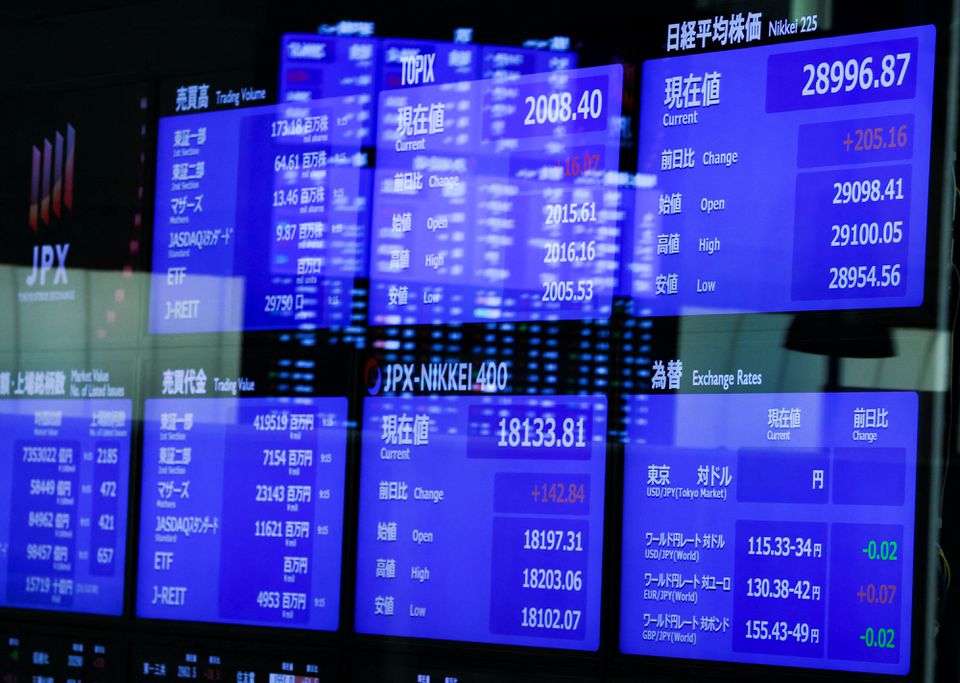Asian shares rallied on Monday as hopes for less aggressive U.S. rate hikes and the opening of China's borders bolstered the outlook for the global economy.
MSCI's broadest index of Asia-Pacific shares outside Japan (.MIAPJ0000PUS) rose 2.0% to a five-month top, with South Korean shares (.KS11) gaining 2.2%.
Chinese blue chips (.CSI300) added 0.7%, while Hong Kong shares (.HSI) climbed 1.4%. China's yuan also firmed to its highest since mid-August under 6.8000.
Japan's Nikkei (.N225) was closed for a holiday but futures were trading at 26,215, compared with a cash close on Friday of 25,973.
S&P 500 futures added 0.2% and Nasdaq futures 0.3%. EUROSTOXX 50 futures gained 0.6%, while FTSE futures firmed 0.3%.
Earnings season kicks off this week with the major U.S. banks, with the Street fearing no year-on-year growth at all in overall earnings.
"Excluding Energy, S&P 500 EPS (earnings per share) is expected to fall 5%, driven by 134 bp of margin compression," wrote analysts at Goldman Sachs. "Entering reporting season, earnings revision sentiment is negative relative to history.
A sign of the strain came from reports Goldman would start cutting thousands of jobs across the firm from Wednesday, as it prepares for a tough economic environment.
In Asia, Beijing has now opened borders that had been all but shut since the start of the COVID-19 pandemic, allowing a surge in traffic across the nation.
Bank of America analyst Winnie Wu expects China's economy, the second-largest economy in the world, to benefit from a cyclical upturn in 2023 and anticipates market upside from both multiple expansion and 10% EPS growth.
Sentiment on Wall Street got a boost last week from a benign blend of solid U.S. payroll gains and slower wage growth, combined with a sharp fall in service-sector activity. The market scaled back bets on rate hikes for the Federal Reserve.
Fed fund futures now imply around a 25% chance of a half-point hike in February, down from around 50% a month ago.
That will make investors ultra sensitive to anything Fed Chair Jerome Powell might say at a central bank conference in Stockholm on Tuesday.
It also heightens the importance of U.S. consumer price index (CPI) data on Thursday, which is forecast to show annual inflation slowing to a 15-month low of 6.5% and the core rate dipping to 5.7%.
"We at NatWest have lower than consensus CPI forecasts, and if right that will likely solidify the market pricing of 25bps vs 50bps," said NatWest Markets analyst John Briggs.
"In context, it should still be seen as a Fed that is still likely to hike a few more times and then hold rates high until inflation's decline is guaranteed - to us that means a 5-5.25% funds rate."
Friday's mixed data had already seen U.S. 10-year yields drop a steep 15 basis points to 3.57%, while dragging the U.S. dollar down across the board.










